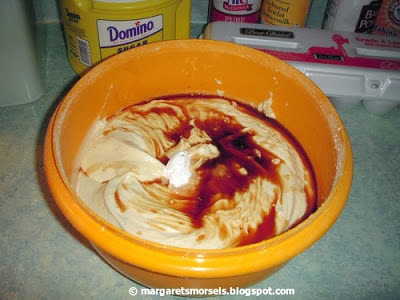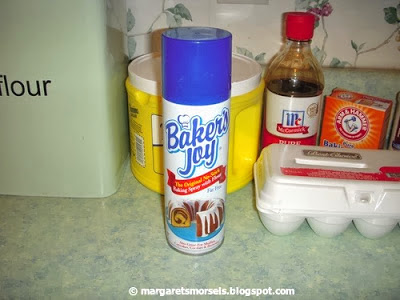Carrot souffle isn't a souffle in the true sense of the word. Traditionally, a souffle is comprised of two parts: a thick egg based sauce or puree which gives the souffle flavor and beaten egg whites which gives the souffle lift. Carrot souffle doesn't use beaten egg whites which makes it more of a puree: a thick, soft dish made by processing cooked food through a sieve or mixing it with a mixer, blender or food processor. Carrot souffle definitely sounds more appealing than carrot puree!
I have three versions of this recipe, but the one I'm sharing is my favorite because it uses less sugar than the others. Carrots are naturally sweet and, in my opinion, don't need as much sugar as the amounts called for in the other recipes. I use baby cut carrots for two reasons. One, I always have them on hand. Two, I don't have to peel and cut the carrots, a real time saver when you're cooking a holiday meal. Another way to save time is to assemble the remaining ingredients while the carrots are cooking in boiling water.
The cooked carrots
When the carrots are tender, drain them thoroughly and combine them with the remaining ingredients. One ingredient, baking powder, acts as a leavening agent. However, don't expect the souffle to rise to the top of the baking dish like a souffle made with beaten egg whites. It actually rises very little, if any.
Ready to be baked
A nice touch is to bake the souffle in a souffle dish -- a round bowl with straight edges -- but it can be baked in any 2-quart baking dish. Grease the dish and coat it with granulated sugar. Sprinkle the sugar in the bottom of the dish and rotate it like you would if you were coating a cake pan with flour, making sure to coat the bottom and sides. The sugar adds a slight crust around the edges and additional sweetness to the cooked shuffle. Add the carrot mixture and bake until the souffle is set in the center when pressed lightly with your fingertip.
The souffle can be served hot, but I think it tastes better lukewarm. This is helpful at the holidays since the souffle can be cooling while the rest of the food cooks in the oven. I let the souffle cool 30 minutes on a wire rack before garnishing the top with powdered sugar. The easiest way to add the powdered sugar is to put it in a small mesh strainer and sprinkle it on the souffle.
If you want to cut out the additional sugar, serve it plain.
Carrot souffle is a nice change of pace from traditional sweet potatoes. Like sweet potatoes, it's orange and sweet, but unlike sweet potatoes, most kids eat carrots!
Carrot Souffle
8 to 10 Servings
2 lb. peeled carrots
1 1/2 Tbsp. sugar
2 Tbsp. flour
1 1/2 tsp. baking powder
1 1/2 tsp. vanilla extract
3/4 cup sugar
3 large eggs (room temperature)
1/4 cup butter, softened
powdered sugar (for garnish; optional)
Put carrots in a large saucepan and cover with water; bring to a boil. Reduce heat to medium and cook carrots 30 to 45 minutes, until very tender. Drain. Heat oven to 350°. Lightly grease a 2-quart souffle dish. Coat the bottom and sides with 1 1/2 tablespoons sugar. Set aside. Put carrots in a mixing bowl and add the flour, baking powder, vanilla and 3/4 cup sugar. Mix with an electric mixer until smooth. Add eggs, one at a time, beating well after each addition. Add butter and mix well. Put carrot mixture in prepared souffle dish. Bake 45 minutes, until souffle is set in center when lightly pressed with fingertip. Let cool 30 minutes on a wire rack. Sprinkle powdered sugar on top, if desired, and serve.
© Margaret's Morsels















